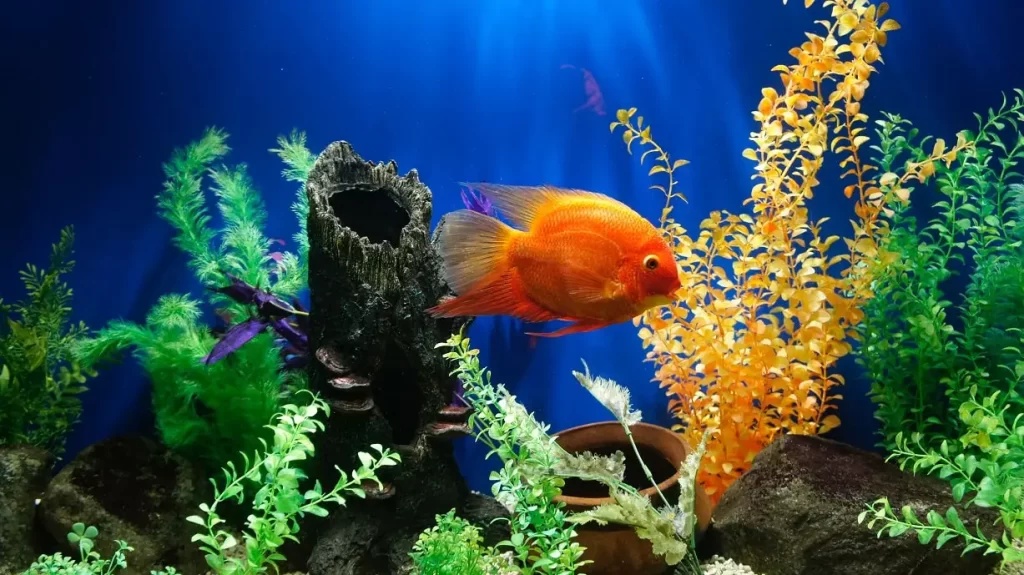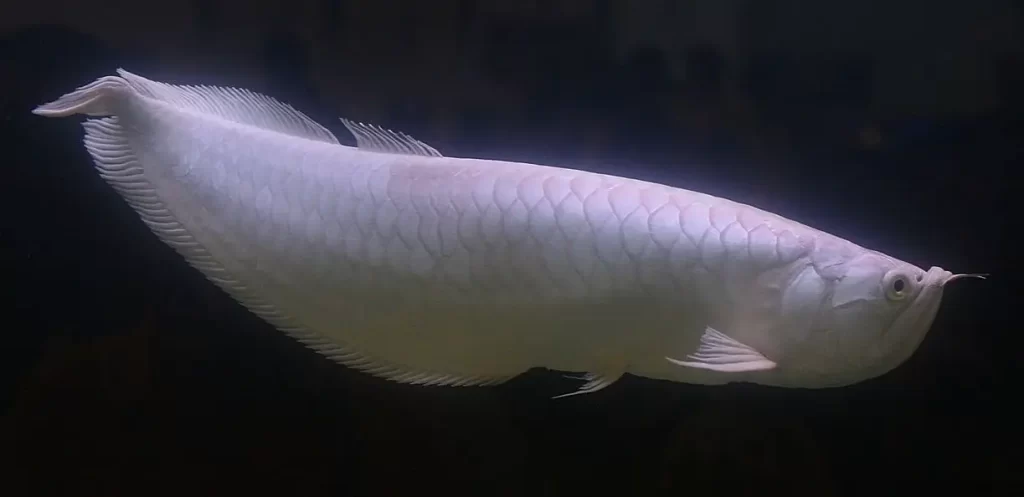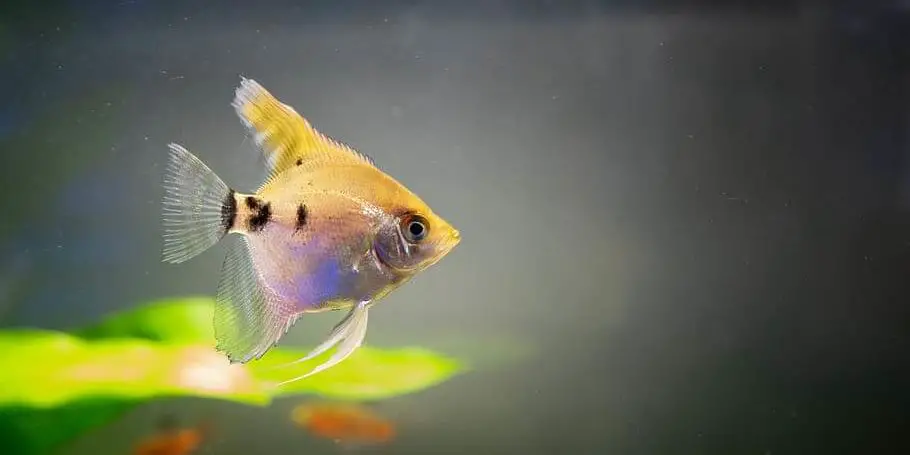Having an aquarium is like having a window into a beautiful underwater world. It’s a peaceful and mesmerizing experience. But just like any living being, your fish and other underwater friends deserve a healthy and happy home. It’s important to show your aquarium some love, care, and attention. Today, let’s talk about the easiest way to clean and maintain your aquarium. So, let’s get started!
Quick Answer:
To maintain a healthy aquarium, regular cleaning is essential. But it goes beyond that. You need to keep an eye on water parameters like ammonia, nitrite, nitrate, and pH, as well as examine the equipment that keeps your aquatic ecosystem running smoothly.
In this article, we’ll guide you through the process, ensuring your underwater companions enjoy a healthy habitat. By the end of this article, you will have all the necessary information required for cleaning and maintaining your aquarium.
Basic Materials You Need While Cleaning Your Aquarium
When it comes to cleaning your aquarium, the usual household cleaning materials may not give you the best results. Let me give you a brief overview of the must-have items for cleaning your aquarium:
1. Magnetic Algae Scraper
The magnetic algae scraper is a convenient tool that you may find interesting. It is specifically designed to effortlessly eliminate algae from the walls of your aquarium. This device comprises two magnets: one placed inside the tank and the other on the outside, creating a secure hold for the scraper.
Using the magnetic algae scraper is incredibly simple. Just move the scraper back and forth along the glass, and watch as it clears away the algae. The best part? You don’t even need to wet your hands because this device can clean on its own. It’s both budget-friendly and perfect for beginners, offering an easy way to keep your aquarium sparkling clean.
2. Water Siphon
The water siphon is an innovative device worth mentioning. It offers the dual benefit of effortlessly extracting water from your aquarium while providing a thorough cleaning for the gravel. Operating it is remarkably easy: simply submerge one end of the siphon into the aquarium and apply gentle suction to the other end.
Once you get the water flowing, the siphon will start to draw in water, along with any debris and junk that may be lurking in the gravel. Whether you’re a beginner or an experienced aquarist, this tool is a must-have for keeping your aquarium clean and your gravel pristine.
3. Cleaning Pad/Sponge
You’ll be amazed to learn that using a cleaning pad or sponge can effortlessly remove dirt and grime from the walls, decorations, and other surfaces of your aquarium. Whenever you encounter stubborn algae or dirty spots, just give the sponge a gentle scrub and witness your aquarium becoming spotless. The sponge is designed to be soft and flexible, enabling you to easily clean even the tiniest corners and crevices without any hassle.
4. Water Conditioner
Water conditioners are like magic for the tap water in your aquarium! When you add this special liquid to the water, it does something amazing – it gets rid of harmful substances like chlorine, chloramine, and heavy metals that can be found in tap water. It’s cool how it works!
When you add it to the water, it performs the remarkable task of eliminating harmful substances such as chlorine, chloramine, and heavy metals that can be found in tap water.
So, whenever you’re cleaning your aquarium using tap water, remember to add a small amount of water conditioner. It will ensure that your tank and water remain safe and non-toxic for your fishy friends.
5. Water Bucket
Buckets are incredibly important for managing water in your aquarium. They play a crucial role when it comes to cleaning and removing water. All you need to do is scoop up the water with a bucket and carry it away. It’s a simple and effective way to handle the task.
When it comes to adding water back into the tank, just fill a bucket with water and add a few drops of water conditioner. It simplifies the entire process of transferring water, making it convenient and hassle-free.
6. Temporary Tank
During aquarium cleaning, having a temporary tank is essential for safely relocating your fish or other animals. It can be a small plastic tank or bucket filled with water, where you can temporarily place the aquarium inhabitants until the cleaning is finished.
This temporary fish tank ensures the safety and comfort of your fish species while you work on maintaining the original fish tank. Once the cleaning is complete, you can carefully transfer them back to their original home.
7. Fish Net
When it’s time to clean your tank and shift your fish to a temporary home, a fish net comes to the rescue. With this handy tool, you can effortlessly lift them and transfer them to a safe spot. But that’s not all!
The fish net also allows you to remove floating food, waste, and dirt from the tank without causing any harm or stress to your fish. Its soft and smooth texture provides a sense of security and calmness for your fish.
8. Clean Cloth/Towel
After cleaning your aquarium, a clean cloth or towel is essential to give it a finishing touch. Simply use it to gently wipe down the outer glass surfaces of the tank, removing any water droplets or cleaning solution that may have accidentally splashed onto the glass. This step ensures a pristine appearance for your aquarium. Once you’re done, you can proceed with setting up the aquarium.
These items play a crucial role in keeping your aquarium clean and ensuring the well-being of your aquatic animals. Make sure to use these tools to experience the joy of an aquarium that sparkles with cleanliness.
How To Maintain Your Aquarium Hygiene?
Taking good care of your aquarium is super important. But you should daily maintain the same level of cleanliness to keep your fishy friends healthy and happy. Here are some easy step-by-step guides that will help you maintain a clean and awesome aquarium:
Step 1: Test The Water Quality
Testing the water quality in your aquarium is like giving it a health check-up. It’s an important task that you should make sure to do regularly. If your aquarium is brand new and hasn’t gone through the cycling process yet, it’s crucial to test the water. You want to ensure that there are 0 parts per million (ppm) of ammonia, 0 ppm of nitrites, and less than 40 ppm of nitrates. Imbalanced levels of these waste compounds can be harmful to your fish, so maintaining the right balance is essential.
Now, if your aquarium is already cycled, your focus should be on keeping the nitrate levels below 40 ppm. To measure the nitrates in your tank water, you can use different water test kits available. These kits will help you determine the amount of water that needs to be removed to maintain the nitrates at a safe level.
By the way, it’s a good practice to keep your aquarium water in a bucket and add water conditioner at least 24 hours before using it. This allows the conditioner to work effectively and make the water safe for your fish.
Step 2: Remove Excess Algae
An aesthetically pleasing fish tank allows us to enjoy the view of our fish, decorations, and substrates. Conversely, excessive algae can hinder this experience by blocking the light and making the water cloudy.
If you observe any changes in water color, simply grab an algae scraper or a toothbrush and gently scrub the walls, decorations, rocks, and plants of the tank. Finally, change the tank water to reveal a beautifully clear view of your fish swimming and playing around.
Step 3: Turn Off All The Equipment
Before you begin removing water from your aquarium, it’s crucial to provide your equipment with a well-deserved break. Take a moment to turn off or unplug all the aquarium gadgets, including heaters, filters, air pumps, and lights.
Running the equipment without water can cause severe damage. So, to ensure the longevity and optimal functioning of your equipment, remember to give them a break by switching them off before you embark on the water removal task.
Step 4: Trim The Plants
If you have live plants in your aquarium, it’s important to give them a little trim to maintain their shape. Take a careful look at the leaves and remove any fully grown ones. Simply and gently pluck them off without being too rough. Additionally, tall-stem plants can benefit from a mini haircut.
Trim a few inches from the tops and replant them to promote the further growth and flourishing of those plants. It’s advisable to remove around 30% to 50% of them regularly to ensure the plants below receive sufficient light and the fish have an adequate oxygen supply.
Step 5: Vacuum The Substrate
Now, it’s time to give your aquarium a good cleaning. Grab your aquarium siphon and carefully vacuum around one-third of the gravel or sand, ensuring you reach all the nooks and corners.
When you vacuum the substrate, it will effectively remove any fish waste, leftover food, and bothersome dead leaves that have accumulated in the substrate. Adjust the position of decorations or hardscapes as necessary, as debris often tends to gather under them.
Step 6: Clean The Filter
Make it a habit to clean your aquarium filter at least once a month. The filter works tirelessly to maintain clean and clear tank water, but it can become clogged with fish waste and debris over time.
To prevent blockages and overflowing, take the time to give your filter a good rinse and remove any built-up waste. This regular maintenance ensures the filter continues to function effectively and keeps your aquarium water in optimal condition.
Step 7: Refill The Water
After completing the aquarium cleaning process, it’s time to refill the tank with freshwater. Before adding the water, remember to treat it with a dechlorinator or a few drops of water conditioner to remove any harmful substances.
Additionally, confirm that the water temperature, pH level, ammonia, nitrite, and nitrate levels are appropriate before introducing fish into the tank. Taking these steps will help to create a safe and suitable environment for your aquatic friends.
Step 8: Turn On All The Equipment
Alright, let’s get your aquarium equipment up and running! Begin by switching on the heater and filter. The heater will keep the water at the perfect temperature for your fish, while the filter will effectively eliminate any remaining dirt and waste. Just give it some time and let the equipment do its job. It will create a clean and vibrant environment for your fish to happily live in.
Step 9: Wipe The Glass
Finally, grab a clean cloth and some acrylic cleaner, and softly wipe the exterior walls of the tank. This will effectively eliminate any water spots and fingerprints, leaving the glass looking stunningly clear.
Timely Aquarium Maintenance Essential For A Healthy Tank
As someone who cares for an aquarium, it’s essential to learn the proper methods and timing for cleaning and maintaining it. Cleaning too frequently can be detrimental to your fish. Instead, pay attention to their feeding habits and manage their waste appropriately. Here are some maintenance tasks you can perform to keep your aquarium clean and your aquatic friends healthy:
1. Daily Maintenance
- You must feed an appropriate amount of food two times a day. Remove all the uneaten food within 10-15 minutes of serving.
- Now and then, you must check up on your fish to see whether they are behaving normally or not, have injuries or not, etc.
- Look whether your filters are running smoothly or not. Also, confirm that the heater is set to the appropriate temperature.
You should keep an eye on all of these things daily to make sure everything is going well with the fish and the tank. Stay attentive to their needs and take quick action if needed.
2. Weekly Maintenance
- Use a water test kit and understand the water conditions in your aquarium every week. A complete water test includes a pH test, nitrate test, and salinity test. You can buy a water test kit from your local pet shop and perform the test. You should make sure every water parameter is at a balanced level.
- Check whether the heaters and filters are correctly wired, current level, temperature level, and functioning properly or not.
If you detect any ups and downs in the levels while testing water quality, do not delay taking the necessary steps as it can harm your fish. Also, change the equipment if they aren’t functioning properly.
3. Monthly Maintenance
- Every month you should change the tank water. If everything is balanced and you do not see it is necessary, you can change about 25%-35% of your tank water. It will help remove accumulated toxins and maintain the water quality for your fish.
- Rinse the filter medium with the same aquarium water. It will remove dust and waste buildup from the filter.
- It is appropriate to clean the gravel, decorations, and substrates using a gravel vacuum. Do not forget to cut off excessive plants while cleaning the tank.
This will help to refresh the whole fish tank and create a healthy environment for your fish to live in.
Changes To Expect When You Finally Maintain a Clean and Healthy Aquarium
When you finally keep your aquarium clean and healthy, you’ll see some amazing changes in your fish tank. Your fish will become livelier, happier, and full of energy in a clean and well-balanced environment. They’ll swim around happily and be less likely to get sick.
Not just that, your aquarium will also look stunning with clear water, well-maintained plants, and a sparkling tank. It’s like having a piece of nature right in your home.
Moreover, as you maintain a clean and healthy aquarium, you’ll notice a wonderful balance developing in the ecosystem. You might see new plants blooming and beneficial bacteria growing in the tank. It’s fascinating to witness this natural harmony. Mentally, it will bring a deep sense of fulfillment and peace to your mind.
Why Is Cleaning And Maintaining An Aquarium Necessary?
Your aquarium is home to a vast array of bacteria and microorganisms, some of which can benefit your fish, while others can pose a risk to their health. When you clean your tank, you’re not only creating a comfortable living space for your fish, but you’re also getting rid of those troublesome bacteria that can make them unwell. Let’s explore the key reasons why it’s important to clean and maintain your tank:
1. To Reduce The Nitrate Level
Every fish tank contains specialized bacteria that play a vital role in its ecosystem. These bacteria are responsible for converting ammonia into nitrite and further into nitrates, essential processes for ensuring the well-being of the tank.
When you replace a portion of the water in your tank, it helps to eliminate those nitrates, ensuring safer water for your fish to thrive. Don’t worry, cleaning the fish tank won’t disturb the beneficial bacteria colony at all.
Keeping the nitrate levels in check safeguards your fish from the harmful effects of ammonia poisoning.
2. To Maintain Equipment
In your aquarium, there are gadgets such as filters, heaters, substrates, and pumps. These gadgets also require care and attention. As time goes by, they can become clogged or damaged, and this can impact how well they work in your aquarium. You need to take responsibility and make sure that these gadgets run smoothly and perform their job effectively. Regularly cleaning and maintaining these gadgets prevents the issues and helps them last longer.
3. To Maintain Water Quality
Sometimes, the water in your aquarium can become cloudy due to things like fish waste, leftover food, and other organic debris. This can lead to an increase in ammonia and nitrite levels, which can stress out your aquatic friends and make them unwell.
However, performing regular partial water changes can prevent the water quality from deteriorating. This way, you can create a comfortable home for your fish and other aquatic inhabitants.
4. To Remove Organic Waste
In fish tanks, organic waste naturally accumulates from leftover food and mainly from fishy poops. Unfortunately, this waste becomes a breeding ground for harmful bacteria, which can harm the beneficial bacteria in the tank. However, you can prevent these issues and keep your fish tank in good shape through regular cleaning and maintenance.
5. To Prevent Diseases
When tanks become dirty, they create an ideal environment for harmful bacteria and dangerous parasites to thrive. These unwelcome guests can cause diseases among your aquatic companions. To safeguard your fish, it’s important to establish a regular cleaning routine.
Pay close attention to even the slightest changes and take prompt action to protect your fish and prevent the spread of diseases.
6. To Make Your Tank Look More Lively
Witness the joy of your fish and other aquatic creatures gracefully swimming in a pristine and lively tank. The sight is truly gratifying! A well-maintained tank not only enhances the ambiance and positive aura of your home but also contributes to your overall sense of well-being.
You should make your fish tank look more lively and enjoyable with simple steps to keep it clean and well-maintained. Regularly clean the tank and ensure all equipment functions properly. This maintains good water quality and prevents the growth of harmful organisms.
Choose engaging decorations and plants to create an interactive and vibrant environment for your fish. Place caves, driftwood, and rocks as hiding places and territorial boundaries for your fish. Include live plants to add visual appeal and improve the ecosystem by oxygenating the water and absorbing excess nutrients.
Low Maintenance Fish Suitable For Beginners
If you’re a beginner looking for low-maintenance fish, several options can be a good fit for you. These fish species are generally known for their ease of care which makes them suitable for beginners. However, it’s important to remember that each species still has specific care requirements that need to be met, they are as follows:
1. Betta Fish
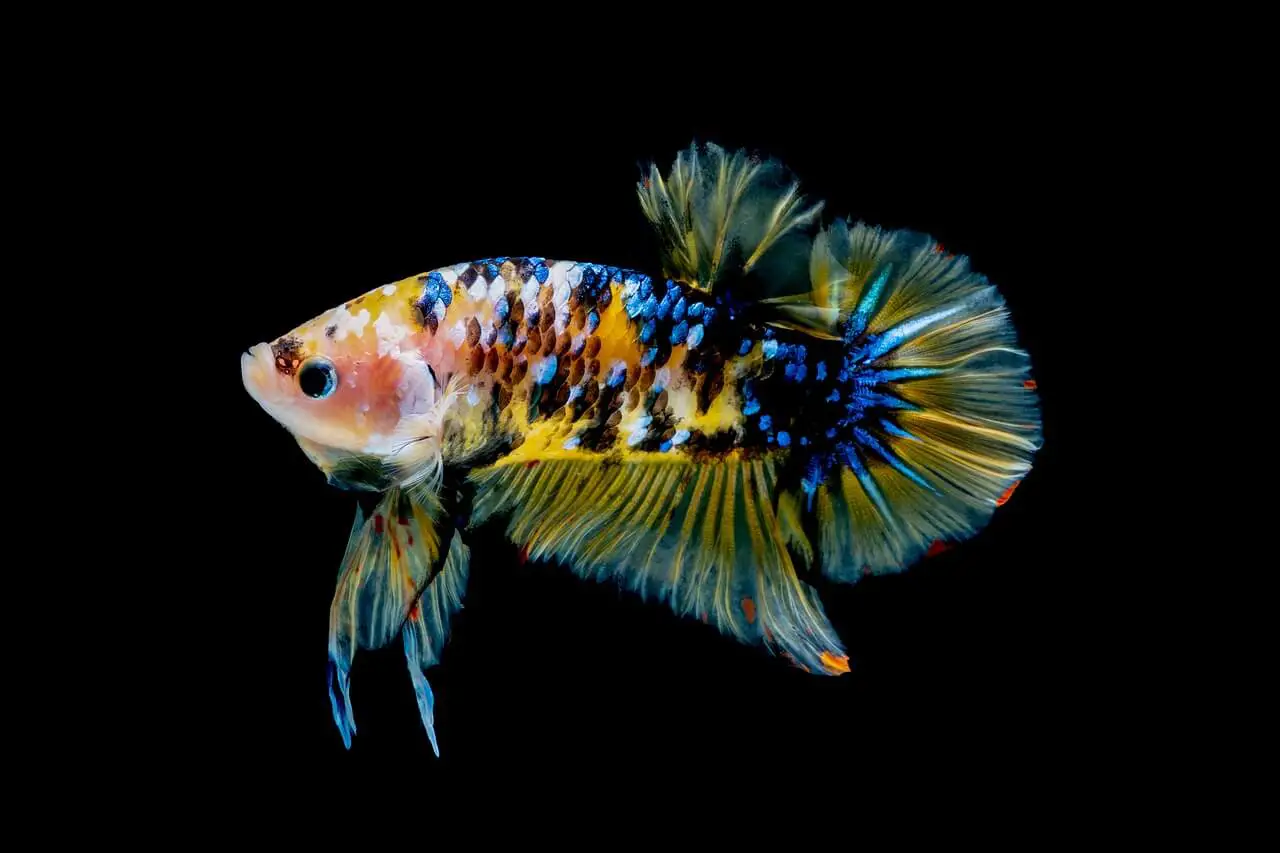
Bettas are quite hardy and can adapt well to various environments, making them a popular choice for beginners. One of the advantages of keeping Bettas is that they don’t require a large space, so they are ideal for smaller aquariums or even medium tanks.
They require clean and warm water, typically around 75-82°F (24-28°C), to live. Bettas are tropical fish, so they may need a heater to maintain the proper temperature in their tank. Regular water changes and a reliable filtration system are important for maintaining a clean and healthy environment for Bettas.
2. Goldfish
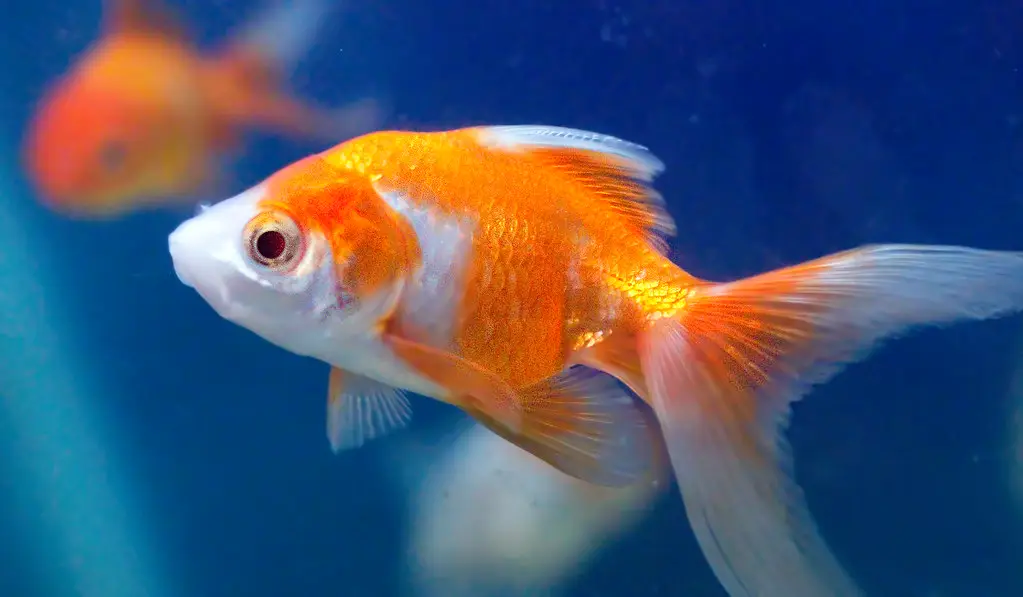
The easy-to-care-for nature of Goldfish makes them a great addition to any tank. But, it’s important to note that goldfish can grow quite large, so they require a large tank. They may produce a lot of waste, so a strong filtration system is essential to keep the tank water clean and healthy. You need to focus on regular tank maintenance including frequent water changes. Goldfish can live for many years if they get proper care and attention from you.
3. Platies

Platies are pretty low-maintenance fish that can handle different water conditions and slight fluctuations in temperature and pH levels. But, it does not mean they can survive even in chemical-rich water.
It is still important to keep their water clean and free of any harmful chemicals. They don’t require a large tank as they typically grow up to two to three inches in length.
4. Black Molly
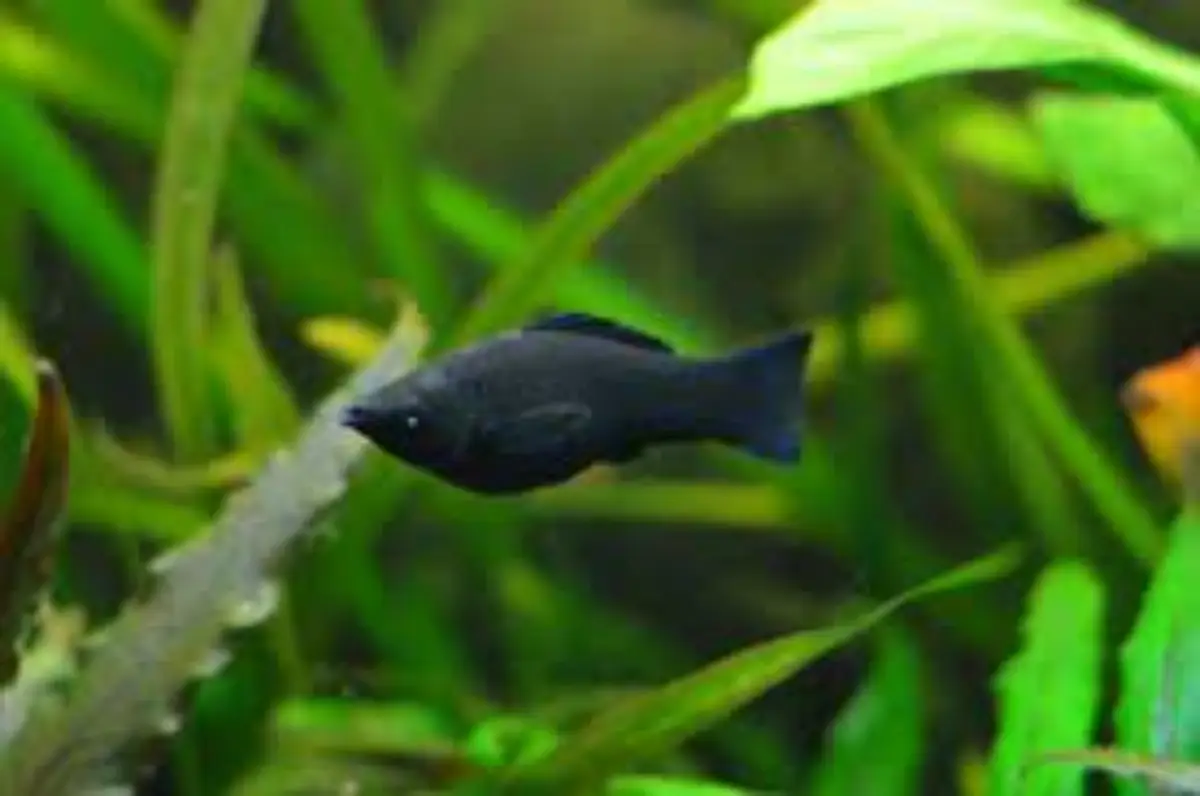
Black mollies are generally peaceful and get along well with other community fish. They are usually omnivorous and have a flexible diet. However, their waste production is not excessive, so they do not require frequent water changes and filter cleaning as compared to some other fish species. As plates, black mollyfish can also adapt to various water conditions. They can tolerate a range of temperatures and pH levels for some periods.
5. Neon Tetras

Neon tetras are small, peaceful in nature, and can adapt to a range of water conditions. But, they do require a well-established aquarium with stable water parameters. Regular water testing and maintenance are important to keep the tank environment optimal for their better health. They produce a moderate amount of waste, so you need to maintain some tasks like water changes and filter cleaning.
It’s important to keep in mind that while the fish mentioned above are generally considered low maintenance, it’s still necessary to provide them with the care and attention they need. Each fish species has its specific requirements, so it’s important to conduct research and understand the particular needs of any fish you plan to keep.
Frequently Asked Questions (FAQs)
Here are some of the frequently asked questions related to the proper maintenance of an aquarium, they are as follows:
How Often Should I Clean My Aquarium?
The frequency with which you should clean your aquarium depends on several factors, including the size of the tank, the number and size of the fish, the type of filtration system used, and the amount of food and waste produced. As a general rule, it is recommended to perform a partial water change of 10-20% every 1-2 weeks, and a more thorough cleaning of the tank every 4-6 weeks.
Do I Need To Remove My Fish While Cleaning My Aquarium?
Yes, it is generally recommended to remove fish from the aquarium before cleaning it. This will prevent any harm or stress to the fish, as well as allow for a more thorough cleaning of the tank without any obstruction. Additionally, removing fish from the tank will allow you to clean the gravel, filter, and other equipment more effectively. However, if you have a very large tank and cannot safely remove all the fish, it may be possible to clean the tank while they remain inside with proper precautions.
Do I Need To Turn Off My Filter And Heater While Changing The Water?
Yes, it is generally recommended to turn off both the filter and heater while changing the water in your aquarium. This is because if you leave them on, they may become damaged or malfunction due to being exposed to air or not being fully submerged in water.
Conclusion
To sum up, maintaining a clean and healthy aquarium requires a commitment to regular cleaning and maintenance. By following the simplest guide to cleaning and maintaining your aquarium, you can prevent equipment failure, maintain water quality, and prevent the growth of harmful organisms that can cause diseases in your aquatic life.
Finally, I think I have covered all the queries related to how to clean And maintain an aquarium. Trust me, you will get better at handling your tank and fish with more experience. If you have read this article completely, then I am sure you will be able to take proper care of your tank.

